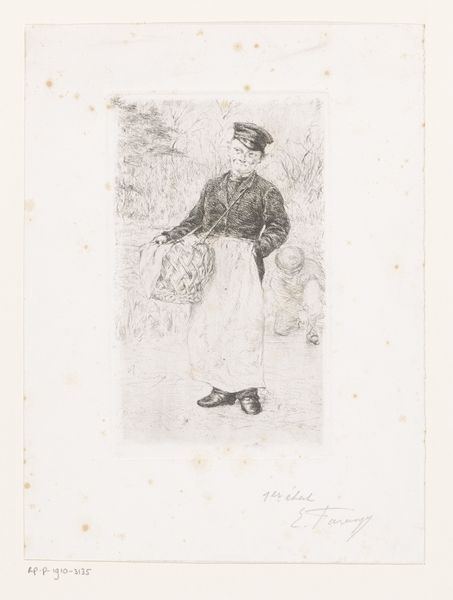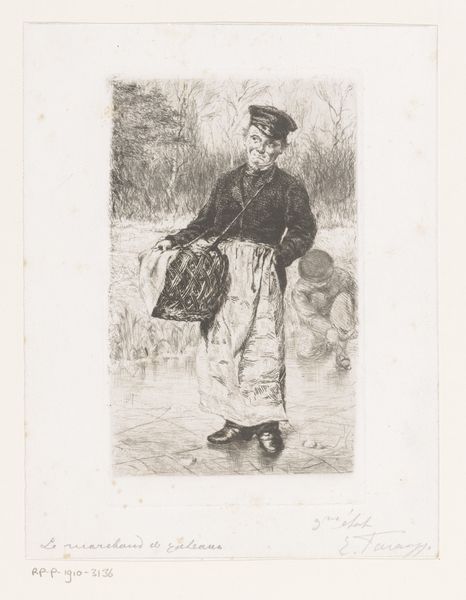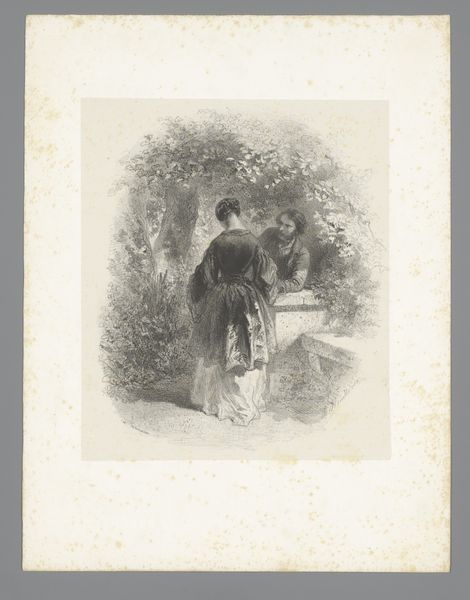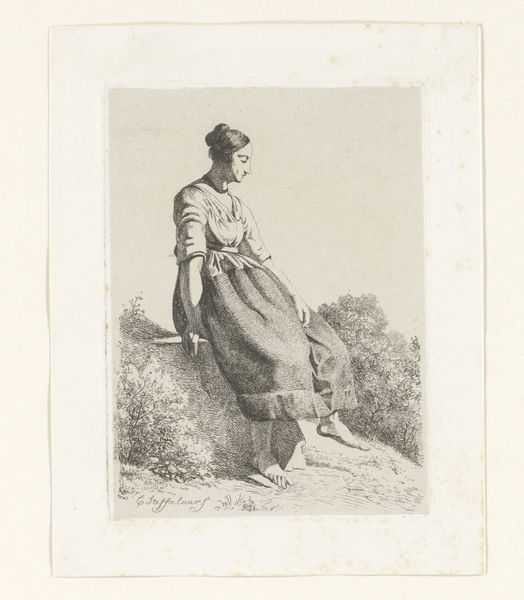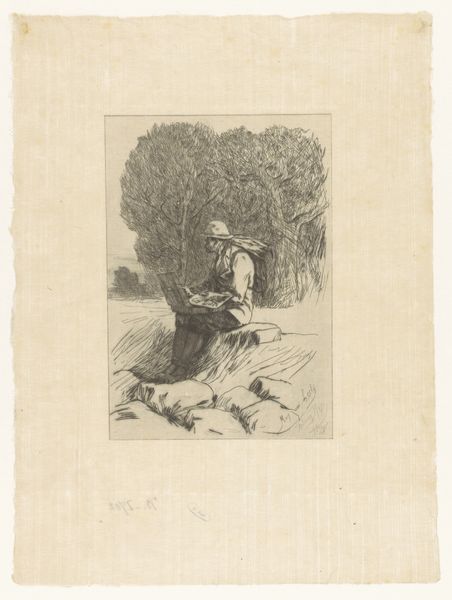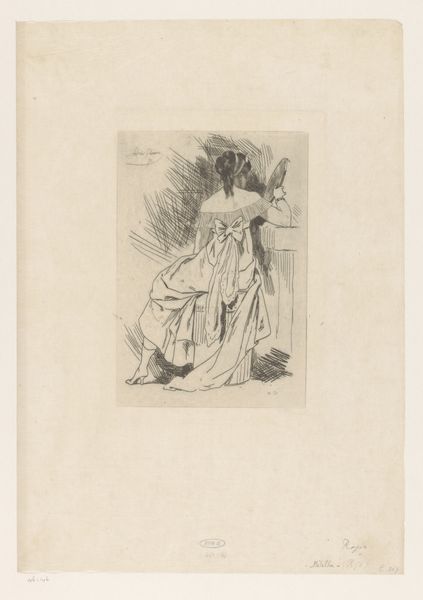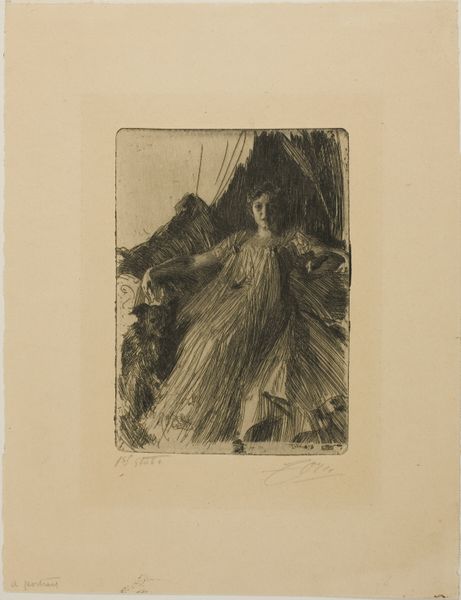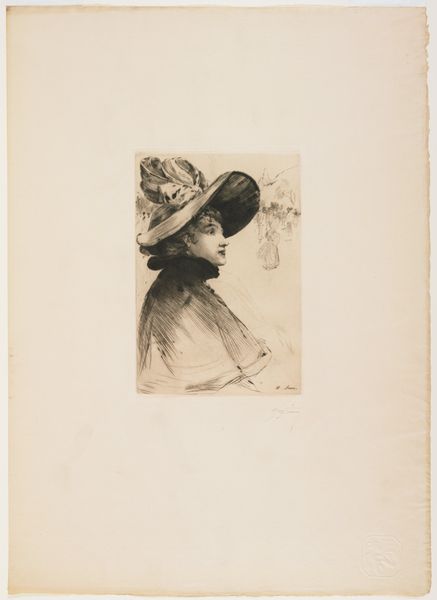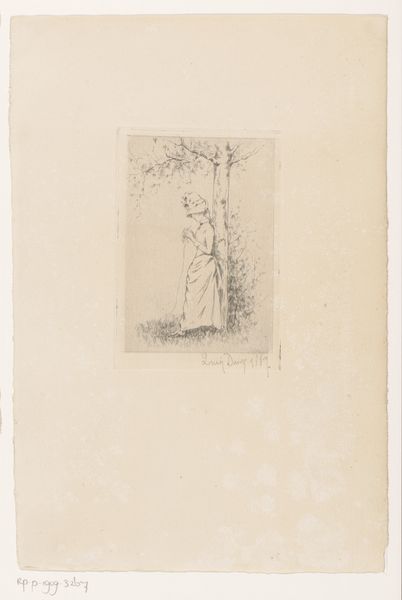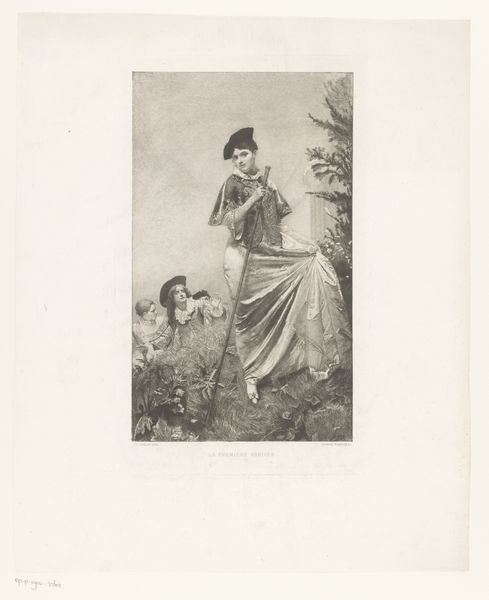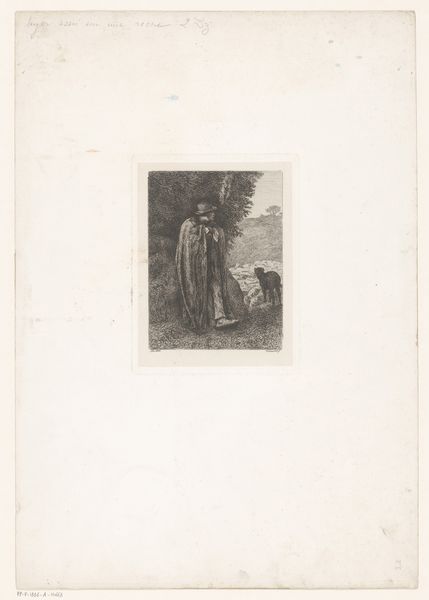
drawing, print, etching
#
pencil drawn
#
drawing
# print
#
impressionism
#
etching
#
pencil sketch
#
genre-painting
Dimensions: height 165 mm, width 100 mm
Copyright: Rijks Museum: Open Domain
Curator: Welcome. Before us, we see an etching titled "Koekverkoper op het ijs", or "Cookie Vendor on Ice," created by Edgard Farasyn sometime between 1868 and 1910. The work provides a small glimpse into a bustling scene of winter leisure. Editor: My first impression is its intimacy. The monochrome palette and delicate lines create a sense of quiet observation, like a candid snapshot of a winter’s day. The light seems to be caught exquisitely by the etched lines on the vendor's figure, casting the rest in subdued tones. Curator: Indeed. It gives us a peek into the popular culture of the period. Etchings like these were often mass-produced, sold as affordable art prints depicting scenes of everyday life, thereby documenting and shaping perceptions of society at leisure. We must understand these as pieces made to feed a market demand for genre paintings in an age before the saturation of photographic imagery. Editor: From a purely aesthetic point, the composition is wonderfully balanced. The vendor is placed centrally, his form grounded while the suggestion of figures beyond and details, like his merchandise-filled basket and a second figure by his right foot, guide our gaze across the whole surface. Even his clothing - dark above, and a lighter color on the skirt he wears -- enhances the overall sense of equilibrium in the tableau. Curator: And there is tension here, is there not? These "cookie vendors" occupied a specific, often precarious, social niche, catering to the rising middle classes enjoying newfound recreational time. They became almost like characters in urban theater, objects of curiosity, of possible charitable engagement but also sources of lower-class "otherness". The smiles that we can find in these kinds of images always carry double valences, or possible patronization. Editor: Interesting point! Yet the detail in his rendered clothing, its play of dark against light, hints at a material dignity; he has agency within this cold tableau. You note, there is even implied narrative, isn't there? What kind of encounter did Farasyn intended to evoke? Curator: By the late 19th century, images had significant roles to play in forging and cementing social classes, and Farasyn certainly must have thought deeply about the socio-political implications of freezing this interaction in time for his intended public to consider at home, to build new visual narratives. Editor: Very insightful. Considering its subtle composition and intimate mood, "Cookie Vendor on Ice," far from merely depicting a vendor in wintertime, indeed gives insight to social conditions in past decades. Curator: It is the true role of a work of art! It encapsulates its society and offers it up for continued study and interpretation across decades and through changing perceptions.
Comments
No comments
Be the first to comment and join the conversation on the ultimate creative platform.
